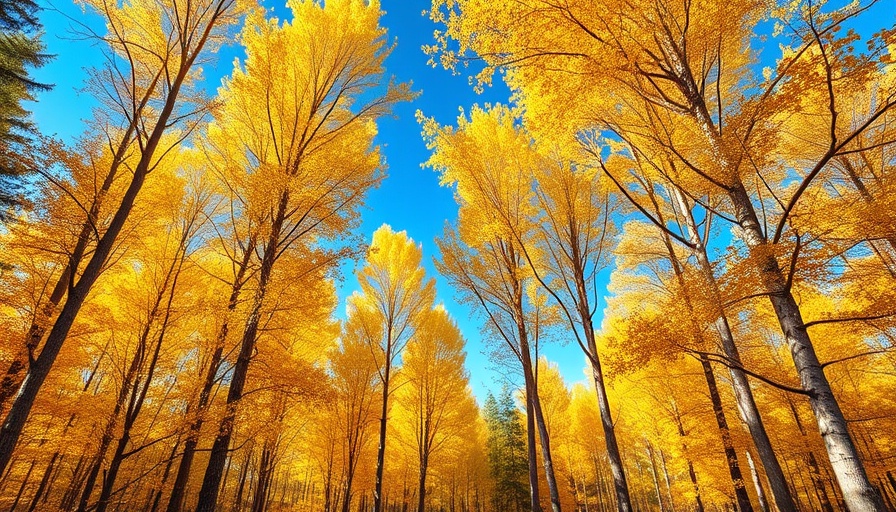
Uncover the Beauty and Benefits of Quaking Aspen Trees
Quaking aspen (Populus tremuloides), often referred to for its fluttering green leaves and striking golden fall color, is more than just a picturesque tree; it's a powerhouse for biodiversity. Found predominantly across the United States, these trees thrive in a range of environments, making them an excellent choice for both novice and experienced gardeners looking to enhance their outdoor spaces.
A Symphony of Movement: Why Plant Quaking Aspen?
The allure of quaking aspen lies in its captivating presence. Standing tall between 40 and 150 feet, depending on the region, these trees create a beautiful canopy that dances gracefully in the wind. When planted along woodland edges or in naturalized settings, they not only provide beauty but also foster wildlife habitats. Insects, birds, and other small animals will find refuge amidst the branches, connecting your garden to the ecosystem.
Cultivation Made Simple: Growing Your Quaking Aspen
Gardening enthusiasts will find quaking aspen easy to cultivate. They prefer full sun and thrive in loamy, organically-rich soils with a pH ranging from slightly acidic to neutral. Here’s a brief guide on how to get started:
- Location: Choose a sunny spot with room for growth.
- Soil Preparation: Ensure your soil is well-draining and rich in organic matter.
- Watering: Regularly water newly planted trees until established, keeping the soil moist.
Maintenance and Care for Vibrant Growth
Quaking aspen trees generally require minimal maintenance once established. However, routine checks for pests, such as aphids or leafcutter bees, can prevent potential infestations. Utilizing organic pest control methods aligns with sustainable gardening practices, ensuring your garden remains healthy and thriving.
The Vibrant Seasonal Cycle of Quaking Aspen
Part of the fascination of quaking aspen lies in their seasonal transformation. In early spring, new leaves unfurl, only to shimmer in summer breezes; by autumn, clusters of leaves turn a brilliant golden hue, providing a stunning backdrop during the fall months. This captivating shift adds dynamic interest to your landscape while promoting seasonal biodiversity.
Creating a Welcoming Habitat with Quaking Aspen
When designing your garden, consider incorporating quaking aspen into your landscape for both aesthetic appeal and ecological benefits. They work beautifully as standalone specimens or in groups, offering shelter for local wildlife while enhancing your property’s natural beauty. Pair them with native shrubs and wildflowers to establish a vibrant, self-sustaining ecosystem.
Addressing Common Misconceptions: Debunking Myths about Quaking Aspen
Some gardeners have concerns about planting quaking aspen, fearing they might spread uncontrollably. While they do propagate through root suckering, careful management, such as proper spacing and regular maintenance, can control their growth effectively. Understanding the tree's natural behavior allows for a balanced planting approach that satisfies both ecological and aesthetic goals.
Future Trends: The Role of Quaking Aspen in Sustainable Landscaping
As more gardeners lean towards sustainable and wildlife-friendly practices, quaking aspen is poised to play a crucial role. These trees not only enhance the visual appeal of a garden but also contribute to the health of the ecosystem. Incorporating them into your designs can create a beautiful harmony that benefits both your garden and the surrounding environment.
Take Action: Plant Quaking Aspen for a Greener Tomorrow
Ready to grow your own quaking aspen trees? Start by exploring local nurseries or garden centers to find healthy saplings, and consider how you can integrate them into your garden design. By choosing quaking aspen, you're not just enhancing your landscaping—you're fostering biodiversity and enjoying the stunning beauty of nature within your home.
 Add Row
Add Row  Add
Add 




Write A Comment